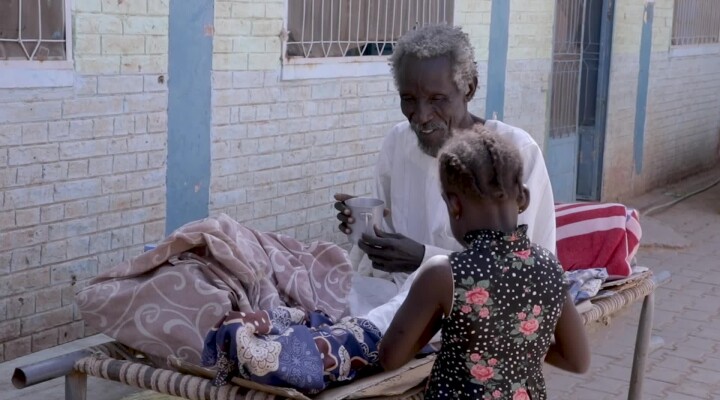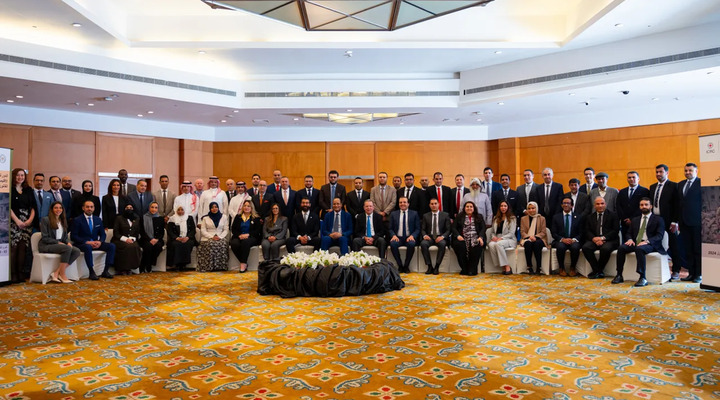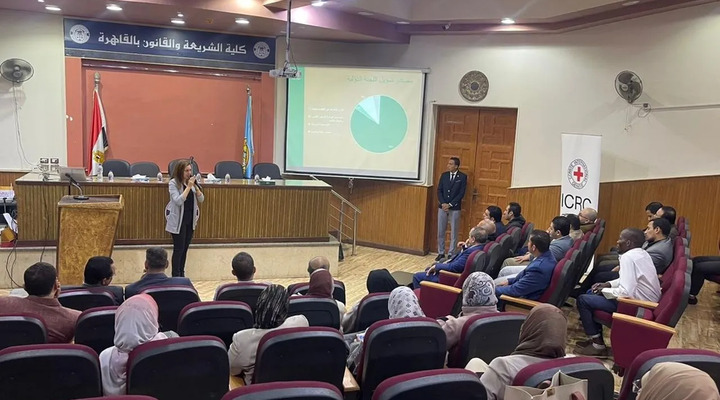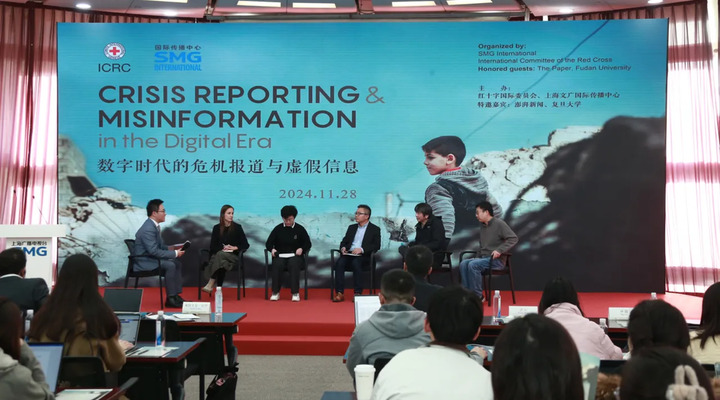Six months on from mega typhoon: hope and resilience
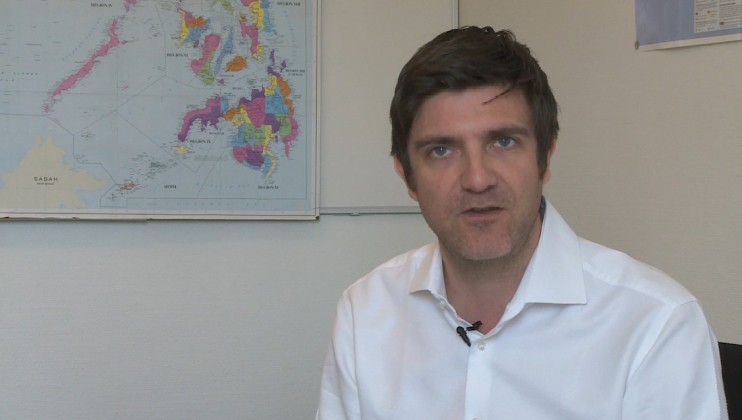
This is a modal window.
Six months on from one of the world's worst typhoons and the people of Samar, who have also faced years of low-level conflict, are rebuilding their lives.
The insecurity caused by the protracted violence has left Samar the poorest island in the Philippines. When people were then hit by the mega typhoon’s 300km winds and 5 metre waves, the effect was devastating.
ICRC's Ewan Watson explains: "Six months on and thousands of people have still to rebuild their incomes. Livelihoods were destroyed by the typhoon; fisherman lost their boats; the coconut trees were destroyed which is the main source of income on the island; health care centres have yet to get up and running again and many are still living under tarpaulin."
Before typhoon Haiyan, Floro Elacion Junior was scratching out a living as a fisherman and managing to send his children to school. “Although life was difficult, we learned to budget our money and food in order to survive,” explains Elacion.
Elacion, his mother, wife and three children were in the evacuation centre when the typhoon hit: “We would never have survived had we not moved to the evacuation centre. Soon after the typhoon, I went home to check what had happened to our house. I was appalled to see the devastation.” The roofs and walls had been blown off and their possessions scattered. Elacion managed to put together a makeshift shelter and the family slept sitting upright when the rain was heavy.
“This was what happened to my boat in the aftermath of the typhoon,” points Elacion. “I found it a few metres away from where I left it - completely damaged. The engine was gone. I dragged my boat here to see what could be saved or used.”
Without his boat, Elacion was unable to support his family and relied on friends and neighbours for hand outs.
The International Committee of the Red Cross (ICRC), in partnership with the Philippine Red Cross (PRC), gave Elacion and 2,884 other fisherman cash grants to rebuild their boats and lives.
As Elacion puts the final lick of paint on his boat he says: “I am working hard to finish this boat so I can go fishing again and my family and I can go back to our normal lives.”
Due to decades of conflict, the ICRC was already working in the region and therefore able to set up a rapid emergency response when the typhoon hit. With the health structures completely destroyed, the ICRC set up two field hospitals where, in the first four months following the typhoon, 9,600 consultations and 200 surgical operations were carried out, and150 babies delivered.
Nurse Marlon Salazar was on duty when the typhoon struck and watched as the hospital fell apart: “During the typhoon, we had many evacuees here. When the wind started, we hid in this room. A newly delivered mother was sitting on the toilet bowl and I was here and could see when the building got destroyed and the sea water coming in. I was praying the door and the roofing would not be blown by off the wind. Every time a patient came in I thought it was my mother or my relatives."
All of Salazar's family survived. For the moment, he is treating his patients in tents: "We are using this as our temporary hospital. The Red Cross gave us medicine, equipment and supplies, like penicillin, antibiotics, fluids. Also they gave us an examining table and they will help us to rehabilitate the hospital."
ICRC's Ewan Watson elaborates: "Over the coming months, we'll rebuild and restock health facilities - anything from hospitals right down to village health care stations."
The typhoon also destroyed the water pipelines limiting people's access to safe drinking water. Working with the Philippine Red Cross (PRC), the ICRC has repaired the water system: “We are clearing the area now,” explains ICRC engineer Selwyn Lester Consimino, “and will put cement on the pipes to keep them safe the next time it floods.”
While the water system is being repaired, the ICRC and PRC has been trucking water to communities on a daily basis reaching 68,000 people.
Nenita Germones says: "Our life here remains difficult. Having access to this safe drinking water really helps."
The ICRC has two more steps to complete in its typhoon recovery programme: constructing up to 6,000 houses and assisting around 7,000 families with cash grants to help turn their hope and resilience into a sustainable recovery.
ICRC's Ewan Watson states: "All this help will support tens of thousands of families to get on their feet again."
Video one - ICRC Statement
Video two - Philippines footage HD
Video three - Philippines footage SD
Shotlist - Video One
Location: Geneva, Switzerland
Length: 1:49
Format: H264 Mov HD
Camera: Nicola Fell
Sound: English
ICRC ref: AV0165N2
Date: 5 May 2014
SOUNDBITE Ewan Watson, Asia and the Pacific Spokesperson, ICRC (in English)
0:00 Six months on after Typhoon Haiyan hit the Philipinnes, many thousands of people remain in a extremely precarious situation. On Samar island, which is where we primarily work, people have already been afflicted for many years by an armed conflict and they've been living in dire poverty so Typhoon Haiyan has only compounded the consequences of all that. Thousands of people have still to rebuild their incomes. Livelihoods were destroyed by the typhoon; fisherman lost their boats; the coconut trees were destroyed which is the main source of income on the island; health care centres have yet to get up and running again so people don't have access to health care entirely and many are still living under tarpaulins so the shelter situation is difficult so for many people it's starting from scratch again.
0:56 Typhoon Haiyan was the worst storm to hit in living memory so the destruction has been enormous and people will need long-term support to help them recover. For the ICRC over the coming months, we will focus on helping the most vulnerable families rebuild storm resilient shelters, we'll rebuild and restock health facilities anything from hospitals right down to village health care stations and we'll help families rebuild their livelihoods again so that could mean for example cash grants to fisherman to help them rebuild their boats. So all this help will support tens of thousands of families to get on their feet again.
END 1:49
Shotlist - Video Two
Location: Eastern Samar, Philipinnes
Length: 8:52
Format: H264 Mov HD & SD
Production: Jesse John Arthur Adep
Camera: Nicola Fell
Sound: English & Waray Waray
ICRC ref: AV0165N
Date: 18-26 March 2014
Copyright: ICRC access all
0:00 giant boat washed onto land
0:05 damaged huts
0:14 tent shelters
0:19 woman washing baby
0:24 truck in water
0:29 damaged huts in process of rebuilding
0:43 Elacion's children arriving home
0:52 Eliacon's damaged home
SOUNDBITE Floro Elacion Junior, Fisherman in Balangiga (in Waray-Waray)
1:01 "Although life was difficult, we learned to budget our money and food in order to survive."
1:15 We would never have survived had we not moved to the evacuation centre. Soon after the typhoon, I went home to check what had happened to our house. I was appalled to see the devastation of our house.
1:29 Elacion's destroyed boat
SOUNDBITE Floro Elacion Junior, Fisherman (in Waray-Waray)
1:37 "This was what happened to my boat in the aftermath of the typhoon. I found it a few metres away from where I left it. I found my boat completely damaged. Its engine was lost. I dragged my boat here (near my house) to see what could still be saved or used."
2:04 Elacion's family eating
2:19 140 Fishermen receiving ICRC cash grant
2:40 Elacion receiving money
3:01 Elacion painting boat
SOUNDBITE Floro Elacion Junior, Fisherman (in Waray-Waray)
3:20 "That is why I am now working hard to finally finish this boat so I can go fishing again to support the needs of my family. With this financial support I received from the ICRC, I will make sure to rebuild my boat so that my family will resume their normal lives again."
3:43 Elacion and his newly painted boat
3:51 boat on shore
3:56 fishermen on water at dusk
4:01 sunset
4:06 ICRC truck on road
4:12 various of Balangiga damaged hospital
SOUNDBITE Nurse Marlon Salazar, Balangiga District Hospital (in English)
4:32 During the typhoon, we had many evacuees here. When the wind started, we hide in this room and when it got stronger, we hid in this comfort room here – we were nice.
The newly delivered mother was sitting on the toilet bowl and I was here and was able to see when the building getting destroyed and I saw already the sea water coming and
5:17 I was praying the door and the roofing would not be blown by the wind."
5:26 various of Balangiga damaged hospital
5:38 "My mind was in my house because my mother was there and my brothers family. every time a patient came n I thought is it my mother or my relatives."
5:44 patients waiting in damaged hospital
6:08 Nurse Salazar treating patient
6:31 "The red cross gave us in this hospital medicine, equipment and supplies, medicine like penicillin, some antibiotics, fluids. Also they gave us an examining table and they will be helping us to rehabilitate the hospital."
7:04 temporary delivery room tent
7:07 medical supplies
7:20 Men fixing pipes at waterfall
SOUNDBITE Selwyn Lester Consimino, ICRC engineer (in Waray-Waray)
7:35 "We are clearing the area now and will eventually put cement on to the pipes to keep the structure durable. So the water pipes are less likely affected when it floods anew."
7:51 various of truck distributing water to people
SOUNDBITE Nenita Germones (in Waray-Waray)
8:15 "Our life here remains difficult. Having access to this safe drinking water is indeed beneficial. After the typhoon, it has been tough to find food, and we sometimes rely on relief goods. We sometimes do not have food on the table. We are grateful that we have access to potable water."
8:35 truck on road
8:46 rainbow
END 8:52
